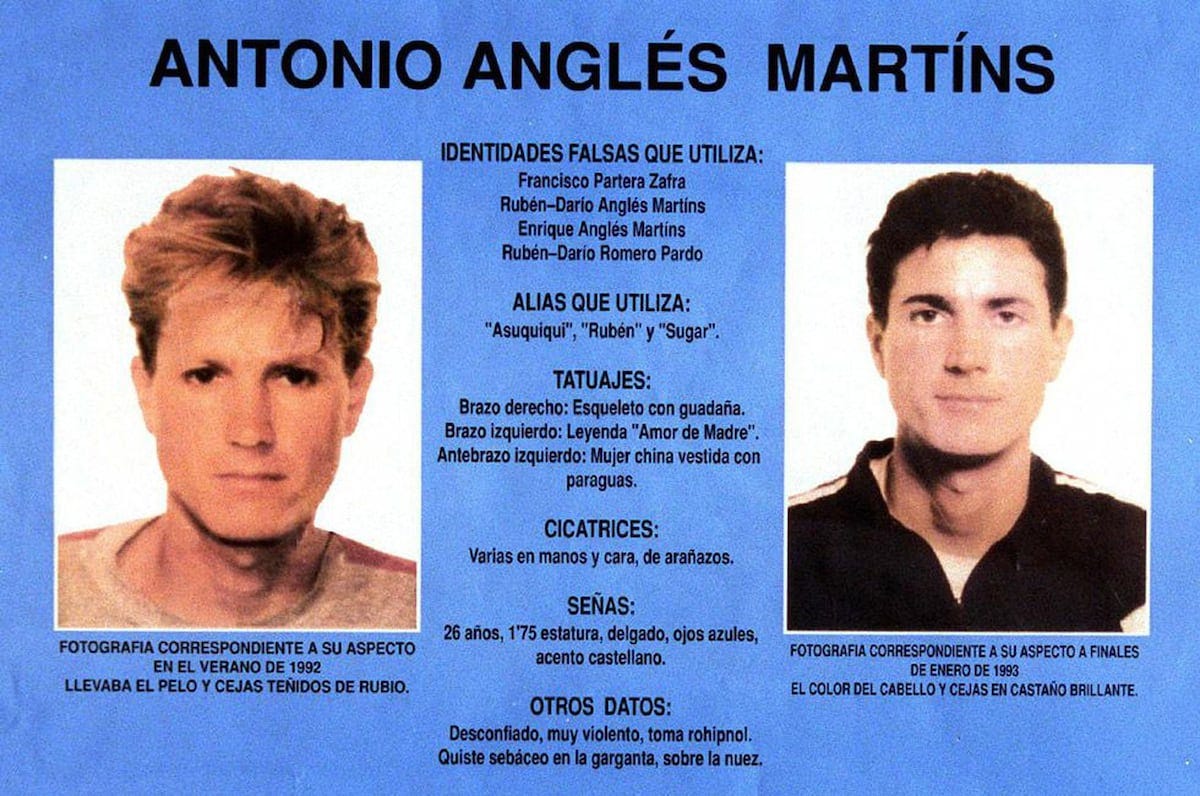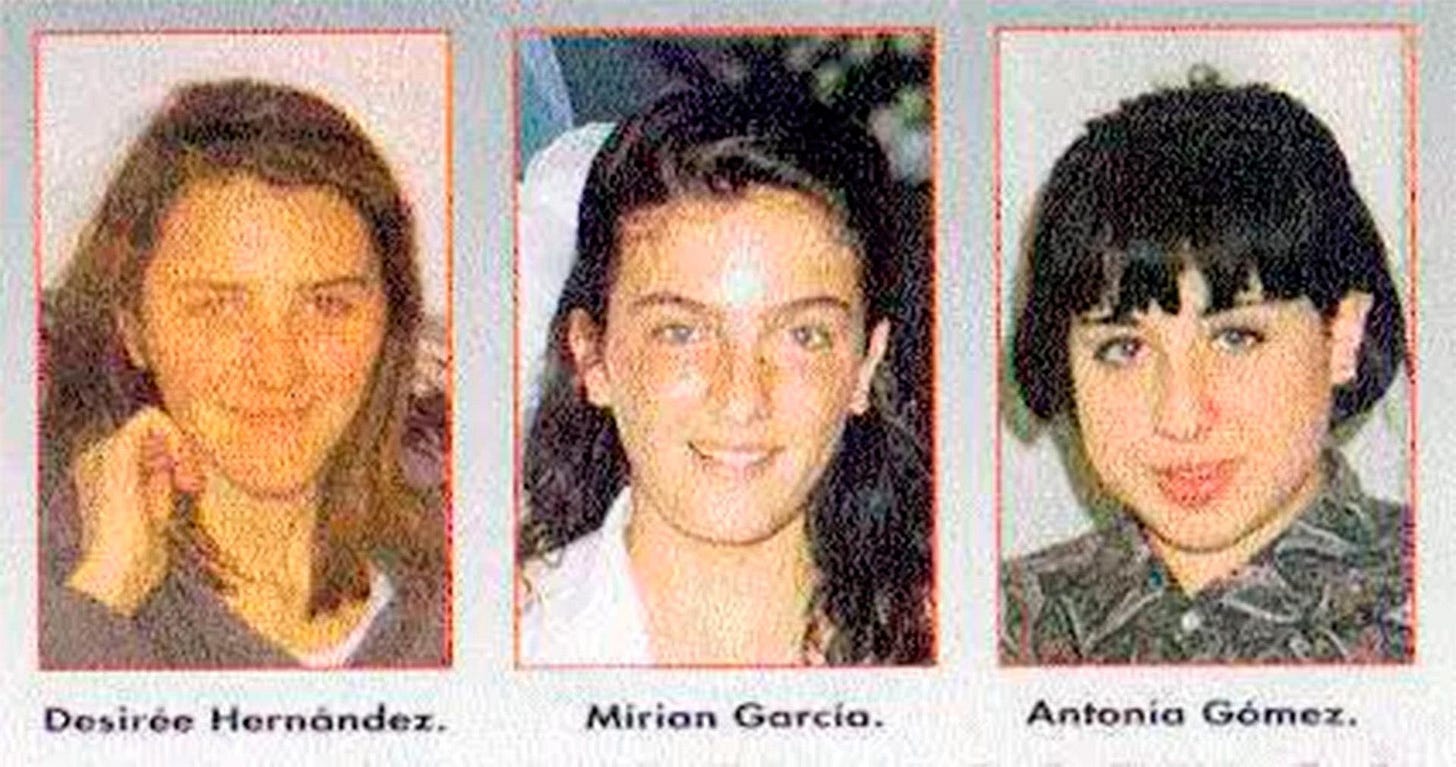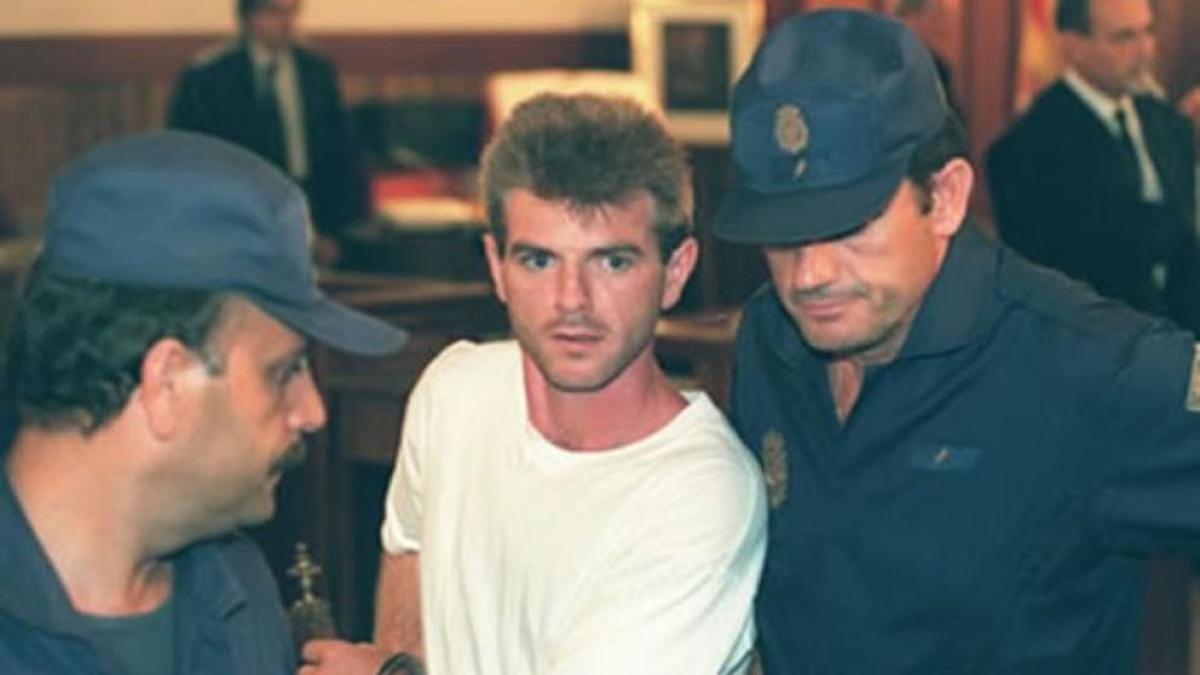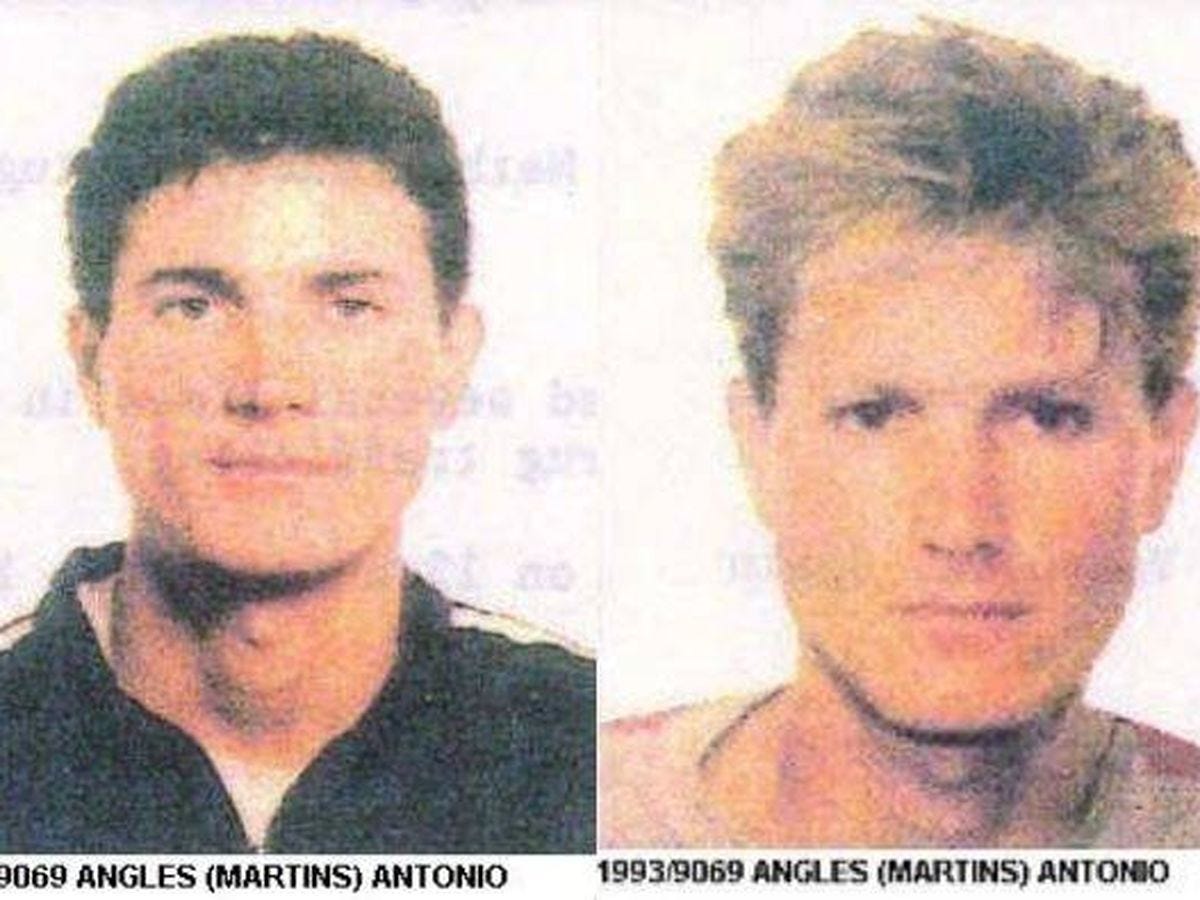The Alcásser Case: How Notorious Killer Antonio Anglés Martins Has Evaded Justice For Over Three Decades
In 1992, the savage murder of three teenage girls in Valencia, Spain shocked the country. As police closed in on the two killers, one of them, Antonio Anglés, managed to evade capture
*Warning: This Article Contains Sensitive Subject Matter*
Background
On a November night in 1992, three teenage girls in the small Spanish town of Alcàsser set out for a night of music, dancing, and fun. They planned to hitchhike their way to a party being held at a local nightclub, but they had no idea that the ride they accepted would be their last.
These three young women would suffer horrific abuse at the hands of a man later identified as Antonio Anglés Martins, a dangerous fugitive with a history of violence toward women.
Before Anglés could be punished for his brutal crimes, he became a fugitive and disappeared. For more than 30 years, he has evaded justice while remaining one of INTERPOL’s most wanted fugitives.
A Violent History
Antonio Anglés Martins was born in July 1966 in São Paulo, Brazil. Antonio was the fourth of nine children born to Enrique Anglés and Neusa Martins. By the time Antonio was two, his family relocated to Valencia, Spain, where they settled in the town of Catarroja.
Not much is known about Antonio’s early life beyond this, but records indicate that by his mid-twenties, he was living by himself. From his adolescence, Anglés displayed violent behavior according to friends and family members, who claimed that he frequently physically abused his mother.
In January 1990, Anglés’ violent nature was again unleashed when he kidnapped and tortured 20-year-old Nuria Pera Mateu. Anglés took Nuria to a house in Catarroja, where he physically abused her for two days, keeping her chained up the entire time.
According to Nuria’s testimony published in a 1993 article, she said of the experience: “Antonio hit me on all of my body, he threatened me with stabbing me with a knife and making a mark on my face. He told me that he was going to throw me into a well that was in the house, and he would throw things in so that I could hear how deep it was.”
Nuria suffered greatly, but her life was ultimately spared thanks to the intervention of one of Anglés’ brothers. Anglés claimed that his abuse of Nuria was due to her stealing heroin from him. Whether this is true or not, Anglés was sentenced to more than six years in prison.
After serving two years of his sentence, Anglés was granted a six-day leave from prison to allow him the opportunity for social reintegration. On March 5th, 1992, Anglés seized the opportunity to flee and made his escape. Six months later, in September, police officially designated Anglés as a wanted fugitive.
The Alcàsser Murders
Two months after Anglés became a fugitive, he would commit an act so heinous and evil that it would skyrocket him to international infamy and worldwide fugitive status.
On the evening of November 13th, 1992, 14-year-olds Míriam Garcia and Desirée Hernández and 15-year-old Antoñia Gómez were on their way to a high school party at the local Coolor nightclub.
As the teenagers were attempting to hitchhike their way to the party, Anglés was out driving with his friend Miguel Ricart Tárrega. The pair saw the three girls hitchhiking and pulled over. Anglés asked them if they were going to the Coolor nightclub, and when they said yes, he offered them a ride.
At first, everything seemed fine. Tárrega drove to the Coolor nightclub, but upon arrival, Anglés ordered him to keep driving. Anglés produced a handgun as the girls grew increasingly terrified. He then struck the girls with the butt of the gun and tied them up as Tárrega drove to one of Anglés’ favorite hideout areas of Catadau.
Anglés and Tárrega took the girls into a dilapidated hut where they took turns raping two of them. They left the girls tied up and went back to town for food. Upon returning, they took turns raping the third girl.
Afterwards, Anglés and Tárrega dug a pit and forced the three girls to climb into it before shooting them and filling in the pit with dirt.
The disappearance of Míriam, Desirée, and Antoñia did not go unnoticed. Search parties were organized, and the entire community was scouring every possible location to find them. Then, in late January of 1993, heavy rainfall eroded the topsoil covering the pit where their bodies had been dumped. Two beekeepers stumbled upon the shallow grave and immediately alerted authorities.
The horrific crimes came to be known as the Alcásser case.
Suspects Identified
The initial investigation of the scene and autopsies revealed evidence that would lead authorities to the monsters responsible. Police recovered a gun cartridge left behind in the pit, along with a glove belonging to Tárrega and a social security slip with Anglés’ brother, Enrique Anglés Martins’ name printed on it.
The Civil Guard was aware of Anglés’ violent past and immediately presumed he was involved. But when they arrived at his home, they learned he was already on the run. The Civil Guard was able to apprehend Tárrega, who was put on trial for his involvement.
Though Tárrega did not deny that he had helped conceal the bodies and witnessed one of the murders, he portrayed himself as a scapegoat and pointed the blame at Anglés, who was still nowhere to be found.
In 2013, after serving 21 years in prison, Tárrega was released. In interviews after his release, Tárrega maintained that he was not responsible for murdering those three young women in 1992, and he still insists that Anglés is the one who committed the horrific crime.
Immediately after the discovery of the bodies, Anglés fled to a nearby Valencian town, where he evaded capture for a month despite multiple police authorities pursuing him. Anglés was nearly apprehended in Vilamarxant, but he somehow evaded the police blockades that were set up to capture him.
A few days later, Anglés was seen in Minglanilla, but he quickly vanished again. In March 1993, it appeared that Anglés had successfully fled Spain, as he was spotted in Lisbon at that time. After that, the sightings stopped, and it seemed the trail had gone cold.
Disappearance and Possible Sightings
After his last sighting in Lisbon, Anglés vanished. Some theorize that he boarded a ship in Lisbon and traveled back to Brazil. Having dual nationality and a Brazilian passport, it’s feasible that Anglés might have fled to Brazil and assumed a new identity, evading the ongoing manhunt that had now become international.
Another more popular theory is that Anglés stowed away on the ship City of Plymouth bound for Liverpool, where he jumped overboard after being almost caught near the Irish coast.
If he did jump overboard, it’s entirely possible that Anglés died due to the cold water temperatures, but it is possible that he could have survived long enough to reach solid ground.
In February of 2021, Spanish authorities reignited the hunt for Anglés, demanding witnesses from the City of Plymouth crew be questioned again. According to these interviews, a British sailor caught a stowaway on board the City of Plymouth five days after the ship had left port in Lisbon.
The sailor discovered the stowaway in the early morning hours and locked him in a room, but when he returned the next morning, the stowaway had escaped through the room’s window.
That same stowaway was seen by a French reconnaissance plane drifting near the Irish coastline aboard a raft. The City of Plymouth circled back, picked up the stowaway, and locked him in a cabin once again.
Later that day, when the ship docked in Dublin, the Irish authorities boarded the vessel to take the stowaway into custody. Unfortunately, the vanishing act had repeated itself, as the mysterious stowaway had used ropes extending from the cabin’s window to reach the docks below before an arrest could be made.
A 2023 Spanish documentary featured testimony from a former Dublin port employee, Gerry McDonnell, who alleged that he had witnessed Anglés leave the City of Plymouth and walk off into the darkness as Irish authorities boarded the ship to arrest him.
On the same TV documentary, retired Garda Detective Sergeant Alan Bailey said that Anglés would remain a primary suspect in the March 1993 disappearance of Annie McCarrick, a 26-year-old American woman who went missing in Dublin.
In 2024, Anglés’ family petitioned a judge in Catarroja to officially declare Anglés dead; however, the judge refused this request, and at this time, Anglés is still presumed alive until such evidence is discovered that can prove otherwise.
Antonio Anglés remains one of the most wanted criminals in Spain, and his name was placed on INTERPOL’s top most wanted list, where it shall presumably remain until any further evidence is presented as to his whereabouts.
Alleged sightings of Anglés have been reported far and wide, from Brazil to Mexico and beyond.
Closing Thoughts
While many believe Anglés to be long since deceased, others speculate he may still be out there, trying to outrun the atrocities of his past and evade facing the consequences of his actions.
Per Spanish law, Anglés will no longer be held criminally responsible for the Alcásser murders after 2029, even if he is found alive after that point. Given that more than three decades have passed without a trace of Anglés, it seems highly unlikely that this case will ever be truly closed.
Sources:
Interpol Academic Guide MMUN XIV. Marymount School Bogotá, Jan. 2024, https://marymountbogota.edu.co/wp-content/uploads/2024/01/Interpol-Academic-Guide-MMUN-XIV.pdf
“Judge Refuses Bid to Have Spanish Serial Killer Last Seen in Ireland Declared Dead.” Sunday World, 16 Jan. 2024, https://www.sundayworld.com/crime/world-crime/judge-refuses-bid-to-have-spanish-serial-killer-last-seen-in-ireland-declared-dead/a1830552348.html
















Very interesting story. Thanks for sharing.